Refine search
Actions for selected content:
23990 results in Ancient history
Map - The late Roman world (sites and regions discussed in the text)
-
- Book:
- Constructing Communities in the Late Roman Countryside
- Published online:
- 07 September 2011
- Print publication:
- 25 August 2011, pp xii-xiv
-
- Chapter
- Export citation
List of abbreviations
-
- Book:
- Constructing Communities in the Late Roman Countryside
- Published online:
- 07 September 2011
- Print publication:
- 25 August 2011, pp xi-xi
-
- Chapter
- Export citation
Bibliography
-
- Book:
- Constructing Communities in the Late Roman Countryside
- Published online:
- 07 September 2011
- Print publication:
- 25 August 2011, pp 230-263
-
- Chapter
- Export citation
Index
-
- Book:
- Constructing Communities in the Late Roman Countryside
- Published online:
- 07 September 2011
- Print publication:
- 25 August 2011, pp 264-269
-
- Chapter
- Export citation
Chapter 3 - Small politics
-
- Book:
- Constructing Communities in the Late Roman Countryside
- Published online:
- 07 September 2011
- Print publication:
- 25 August 2011, pp 91-120
-
- Chapter
- Export citation
Chapter 4 - Power as a competitive exercise
-
- Book:
- Constructing Communities in the Late Roman Countryside
- Published online:
- 07 September 2011
- Print publication:
- 25 August 2011, pp 121-147
-
- Chapter
- Export citation
Frontmatter
-
- Book:
- Constructing Communities in the Late Roman Countryside
- Published online:
- 07 September 2011
- Print publication:
- 25 August 2011, pp i-iv
-
- Chapter
- Export citation
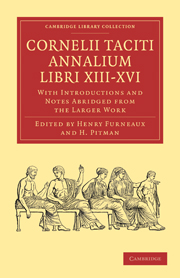
Cornelii Taciti Annalium Libri XIII-XVI
- With Introductions and Notes Abridged from the Larger Work
-
- Published online:
- 05 August 2011
- Print publication:
- 23 June 2011
- First published in:
- 1904
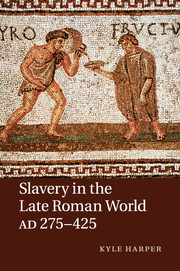
Slavery in the Late Roman World, AD 275–425
-
- Published online:
- 05 August 2011
- Print publication:
- 12 May 2011
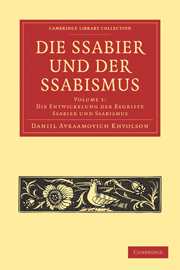
Die Ssabier und der Ssabismus
-
- Published online:
- 05 August 2011
- Print publication:
- 19 May 2011
- First published in:
- 1856
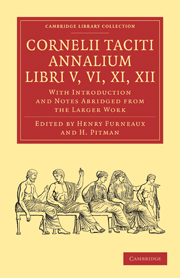
Cornelii Taciti Annalium, Libri V, VI, XI, XII
- With Introduction and Notes Abridged from the Larger Work
-
- Published online:
- 05 August 2011
- Print publication:
- 10 June 2010
- First published in:
- 1912
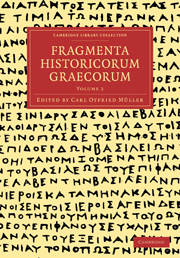
Fragmenta Historicorum Graecorum
-
- Published online:
- 05 August 2011
- Print publication:
- 31 October 2010
- First published in:
- 1848
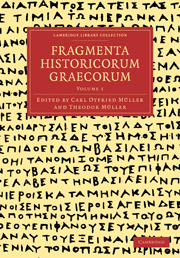
Fragmenta Historicorum Graecorum
-
- Published online:
- 05 August 2011
- Print publication:
- 31 October 2010
- First published in:
- 1841

Ilios
- The City and Country of the Trojans
-
- Published online:
- 05 August 2011
- Print publication:
- 15 July 2010
- First published in:
- 1880
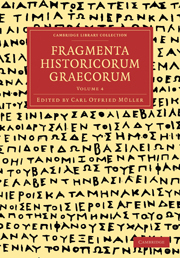
Fragmenta Historicorum Graecorum
-
- Published online:
- 05 August 2011
- Print publication:
- 31 October 2010
- First published in:
- 1851
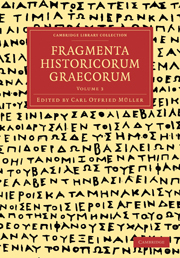
Fragmenta Historicorum Graecorum
-
- Published online:
- 05 August 2011
- Print publication:
- 31 October 2010
- First published in:
- 1849
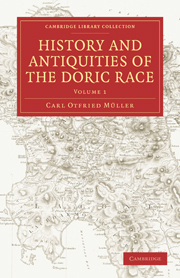
History and Antiquities of the Doric Race
-
- Published online:
- 05 August 2011
- Print publication:
- 29 July 2010
- First published in:
- 1830
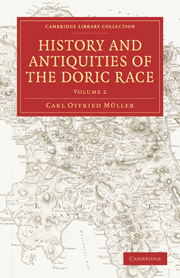
History and Antiquities of the Doric Race
-
- Published online:
- 05 August 2011
- Print publication:
- 29 July 2010
- First published in:
- 1830
27 - Runaways and Quilombolas in the Americas
- from PART VIII - SLAVERY AND RESISTANCE
-
-
- Book:
- The Cambridge World History of Slavery
- Published online:
- 28 September 2011
- Print publication:
- 25 July 2011, pp 708-740
-
- Chapter
- Export citation
9 - Slavery in Indigenous North America
- from PART III - SLAVERY AMONG THE INDIGENOUS AMERICANS
-
-
- Book:
- The Cambridge World History of Slavery
- Published online:
- 28 September 2011
- Print publication:
- 25 July 2011, pp 217-247
-
- Chapter
- Export citation
